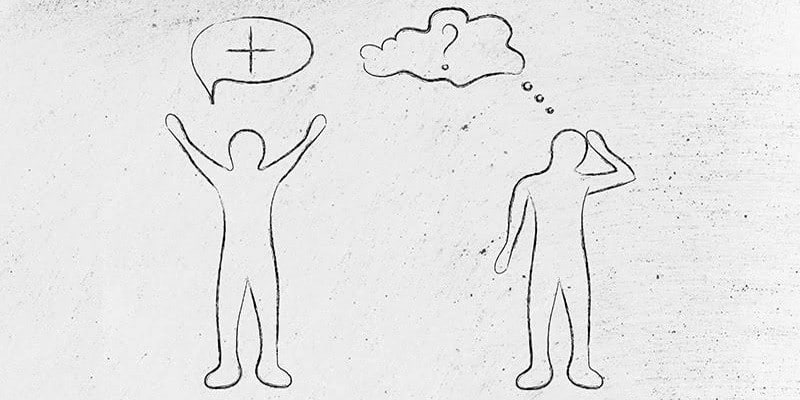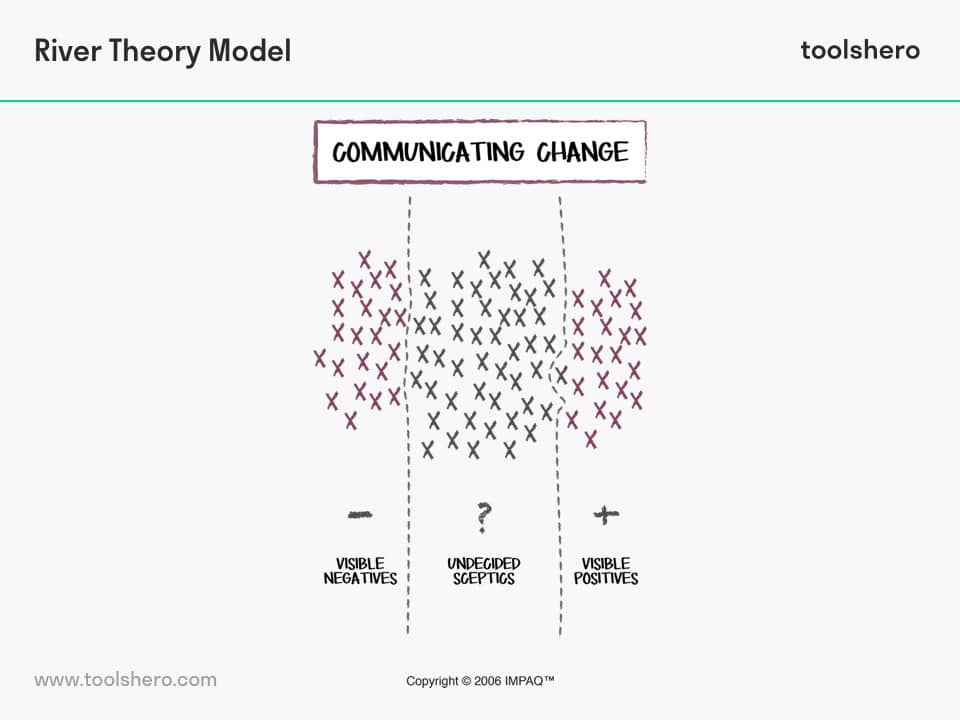River Theory Model

River Theory Model: this article describes the River Theory Approach in a practical way. After reading you will understand the basics of this powerful change management tool.
How do you implement change processes?
Take for example the implementation of a new electronic client file (ECF), this is not a job you can make quick work of. Most organizations have experienced that this can take at least 1.5 years. Or worse: the implementation never sees the light of day at all. This implementation can be done more rapidly but in a different way. How? By communicating how the desired change should be effected from an entirely new perspective.
River Theory Model
Let me introduce you to the River Theory Model. This is a model which was developed by Mark Samuel (Impaq, USA, since 1979), the founder of the accountability movement which has now also become successful in Latin America and Europe.
Through this model you will learn how to effectively communicate change and how to deploy this in your changes process.
Buy-in from the front: a smart move?
I see many organizations in healthcare work with the “buy-in from the front” approach: making sure that everybody is involved in the change. That sounds pretty logical.
If everybody agrees to the change and feels involved, this process will be much quicker, won’t it? Unfortunately, people will always respond in different ways to change processes.
There are people who are incredibly enthusiastic.
And there are people who always wait and see what will happen. And there are people who clearly do not care for change at all! In the meantime we have learned that at the start of a change process there are 20% of people who respond enthusiastically, 60% adopt a wait- and- see attitude and wish to remain ‘invisible and 20% will have outspoken negative opinions on the change.
As human beings we are inclined to devote much attention and energy to convincing those 20% of people who are not yet enthusiastic. After all, we want everyone to embrace and make the change happen for example that they start working with the new ECF.
What would happen if you stopped convincing people?
Imagine, for example, what it would be like if you did not pay any attention whatsoever to the people who have blocked the change from the start.
That you would only focus on the group of employees who are already working smart with apps and tablets. And who have voluntarily signed up for a work group to select the right equipment. What would happen?
Focus on what you want to achieve!
These people are the change you want to make. They already have the right mind-set and they behave in accordance with the change that the organisation envisions.
And yes, their mind-set and behaviour will catch on, especially when they get a sounding board within the organization to spread positive signals. This is how motion is created and with this you will see the first proof of change.
Because positivity is contagious, the large majority, the 60% with a wait-and- see attitude will see that the change is working and they want to take part as well! They will remain ‘invisible’ and that is exactly what they want.
They do not want to stand out by being the first to participate, or to openly oppose. They want to do their jobs quietly and they want to move with the crowd so that they can remain invisible.
It’s Your Turn
What do you think? Is the River Theory Model applicable in your today’s world? Do you recognize the practical explanation or do you have more additions? What are your success factors for good personal and team performance including reviewing?
Share your experience and knowledge in the comments box below.
More information
- Samuel, Mark (2012). Making Yourself Indispensable: The Power of Personal Accountability. Penguin Books.
- Samuel, Mark (2006). Creating the accountable Organization. Midpoint Trade books Inc.
- Original Dutch blog post: https://www.rainmengroup.com/blog/schaf-de-functioneringsgesprekken-af/
How to cite this article:
Stradmeijer, G. (2017). River Theory Model. Retrieved [insert date] from Toolshero: https://www.toolshero.com/change-management/river-theory-model/
Published on: 04/11/2017 | Last update: 05/20/2022
Add a link to this page on your website:
<a href=”https://www.toolshero.com/change-management/river-theory-model/”>toolshero: River Theory Model</a>












